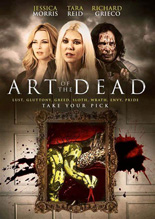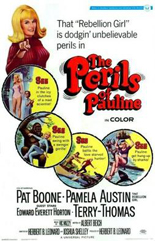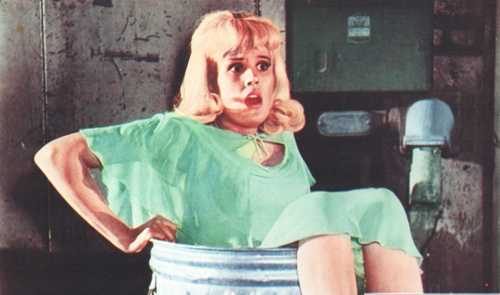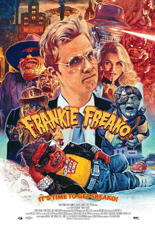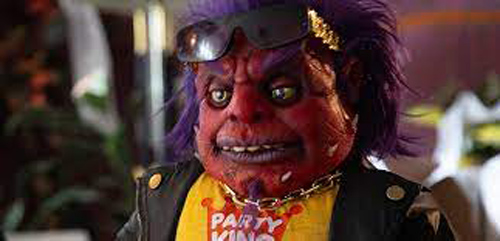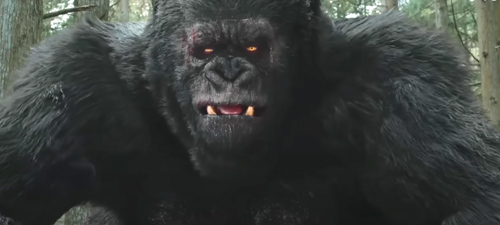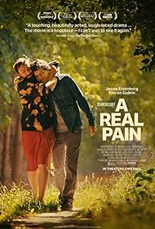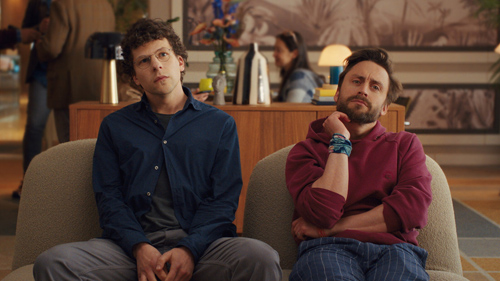
In the late 1970s to early 1980s, it seems like you couldn’t pass an intersection without seeing the original pop-up shop: some guy selling velvet paintings propped against his van. Remember those?
Good. Now cast aside all assumptions of reality and imagine the dude’s entire inventory were worth half a million bucks. Now imagine the perfect person to broker that sale were Tara Reid. Now you’re prepared for Art of the Dead, from writer/director Rolfe Kanefsky (The Erotic Adventures of the Invisible Man).
The gaudy and gauche oils at this horror movie’s necrotic heart depict the seven deadly sins as represented by animals. All come from the brush of the appropriately named Dorian Wilde (Danny Tesla, Attack of the Unknown), who looks like a cross between Frank Zappa and a haberdashery. Wilde’s septet of “masterpieces” — at best, they scream high school art class — is in high demand, despite making people go nuts upon gazing. The prologue illustrates just how, with a cameoing Richard Grieco (Halloween Pussy Trap Kill! Kill!) slaughtering his family.

After outbidding others for the cursed collection, members of the Wilson family find out its downside fast. The goat painting makes Mom (Jessica Morris, Reel Evil) so horny, she fucks a goat — or an NBA-mascot facsimile of one. The snake artwork makes Sis (Cynthia Aileen Strahan, TV’s The Offer) give herself a boob job — using the torn-off breasts of her bully. The frog one makes her brother (newcomer Zachary Chyz) paint the nude body of a sex worker (Sarah French, That’s a Wrap) — with words like “WHORE CUNT SLUT BITCH.”
Too much? But but but I haven’t even gotten to Wilde creating canvases from the skin of a prostitute! And paint from her blood to match! It’s like Ray Bradbury’s legendary short story “The Veldt,” but with 100% more demon-tonguing.
Yes, Art of the Dead is completely preposterous in premise, yet I can’t deny the appeal of its gimmick. Luckily, the film puts you in the proper frame of mind upfront with the credit “a Rolfe Kanefsky flick,” rather than “film” or “movie” or “picture” or another Pauline Kael-friendly synonym.
Even if it hadn’t, is anyone in danger of taking this Mahal Empire production seriously? If so, then they’re not paying attention to the auction worker who drinks from a hose until his belly literally explodes. Or the priest with a milky eye. Or the twin kids turning into giant snails. Or the snakes earning credits as “Hisser” and “Pumpkin.” —Rod Lott

